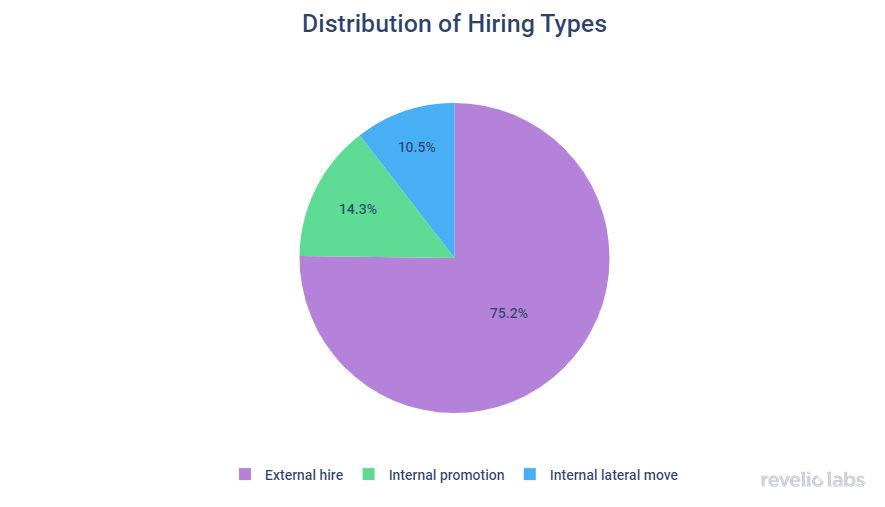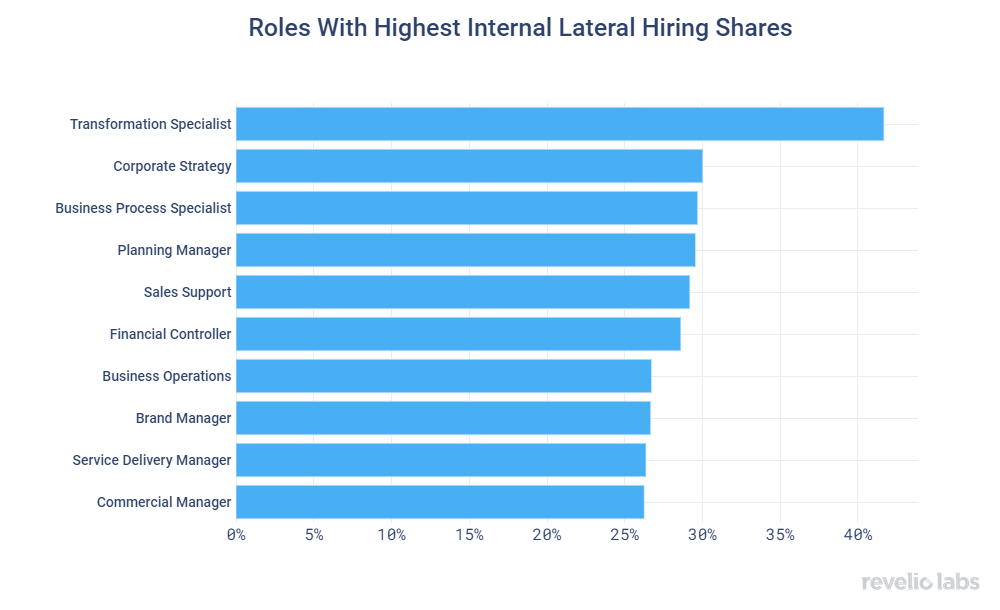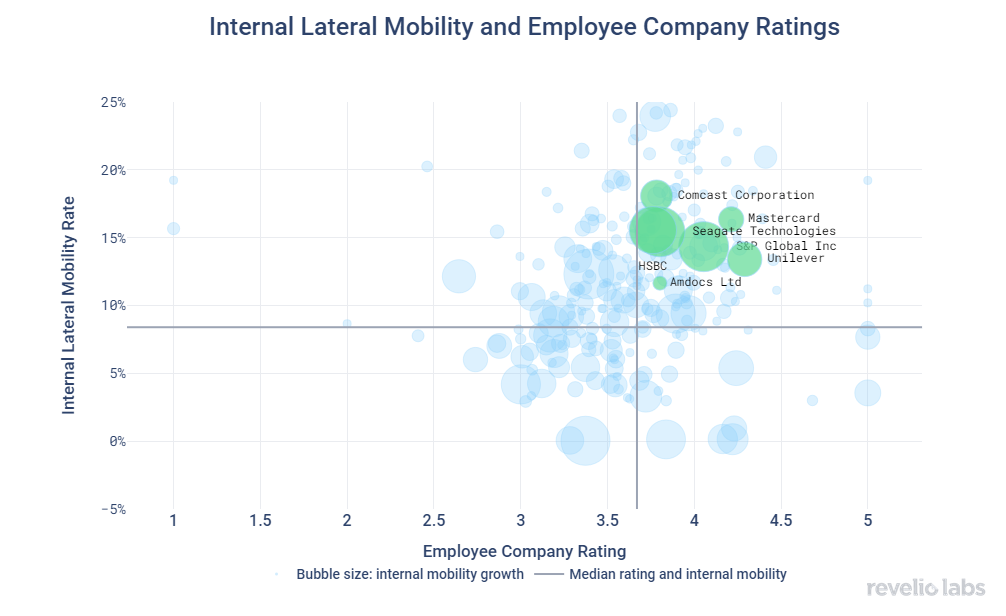Revelio Labs x BCG: Take Advantage of the Talent You Know Best
Companies can and should look inward to fill more of their openings

With labor markets remaining tight, failing to cultivate a culture of internal hiring could cause companies to miss out on a goldmine of readily available talent. In previous research, we have found that lateral career opportunities are more than twice as important as compensation in predicting employee retention.
In our latest article in MIT’s Sloan Management Review, co-authored with BCG Henderson Institute’s Nithya Vaduganathan and Colleen McDonald, we investigate the extent and impact of internal lateral hiring at large US companies. We define internal lateral career moves as employees starting a new position within a company in a new role, while retaining the same level of seniority. Currently, only 10% of all hires at large US companies come from internal lateral moves, Revelio Labs finds.


By adopting leading practices for internal mobility, companies can better deploy existing worker capacity and benefit from more successful hires who hit the ground running. Internal hires have more institutional knowledge and higher levels of engagement and retention. At the same time, employees benefit from meaningful skill and career development opportunities that better align with their goals, making this a win-win for employers and employees alike.
Sign up for our newsletter
Our weekly data driven newsletter provides in-depth analysis of workforce trends and news, delivered straight to your inbox!
Revelio Labs and BCG analysis of internal lateral mobility shows that job roles that involve thinking about the business and workforce planning process as a whole and interacting with leaders of different divisions, such as transformation specialists and corporate strategists, are among the most common roles to be filled with internal lateral hires.


There is considerable variation across companies in the extent of internal hiring. Half of all companies have internal hiring rates of 8% or less, but the top quarter of companies achieve an internal hiring rate of 15% or more. Companies with high rates of internal hiring also have higher rates of employee satisfaction. Learning from companies with both above median internal mobility and employee satisfaction, we identified the key practices these outperformers have in common.


Read the full article to learn more about the four practical insights based on the best practices of outperformers, which offer lessons for companies that are currently underutilizing internal talent in their workforce planning process.
You can also reach out to learn more about Revelio Labs and its suite of prescriptive analytics tools.
Key Takeaways:
- Internal lateral mobility can be a key hiring strategy to access knowledgeable talent and retain employees with great institutional knowledge.
- Companies with high internal mobility practices also have higher employee satisfaction.
- Using Revelio Labs' and BCG's prescriptive analytics tools, we identified four key practices that internal mobility outperformers have in common, and other companies should adopt.


